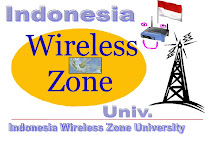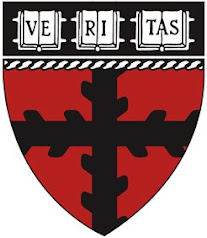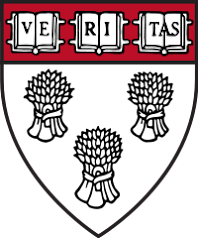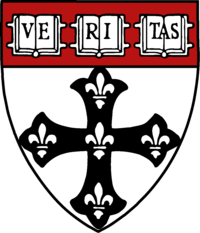Introduction to Special Relativity
Written by Quantum Study Club on 18.198.20 Introduction to Special Relativity
January (IAP) 2005

Albert Einstein. (Image courtesy of Wikimedia Commons.)
By:
Arip Nurahman
Department of Physics
Faculty of Sciences and Mathematics, Indonesia University of Education
and
Follower Open Course Ware at Massachusetts Institute of Technology
Cambridge, USA
Department of Physics
http://web.mit.edu/physics/
http://ocw.mit.edu/OcwWeb/Physics/index.htm
&
Aeronautics and Astronautics Engineering
http://web.mit.edu/aeroastro/www/
http://ocw.mit.edu/OcwWeb/Aeronautics-and-Astronautics/index.htm
Staff
Prof. Bruce Knuteson
Course Meeting Times
Nineteen sessions for 4 weeks
1.5 hours / session
Optional Recitations:
Two sessions / week
1 hour / session
Level
Course Highlights
Course Description
Acknowledgements
Prof. Knuteson wishes to acknowledge that this course was originally designed and taught by Prof. Robert Jaffe.
Syllabus
 Help support MIT OpenCourseWare by shopping at Amazon.com! MIT OpenCourseWare offers direct links to Amazon.com to purchase the books cited in this course. Click on the Amazon logo to the left of any citation and purchase the book from Amazon.com, and MIT OpenCourseWare will receive up to 10% of all purchases you make. Your support will enable MIT to continue offering open access to MIT courses. Help support MIT OpenCourseWare by shopping at Amazon.com! MIT OpenCourseWare offers direct links to Amazon.com to purchase the books cited in this course. Click on the Amazon logo to the left of any citation and purchase the book from Amazon.com, and MIT OpenCourseWare will receive up to 10% of all purchases you make. Your support will enable MIT to continue offering open access to MIT courses. |
Course Outline
I. Introduction and Relativity Pre-Einstein
II. Einstein's Principle of Relativity and a new Concept of Spacetime
III. The Great Kinematic Consequences of Relativity
IV. Velocity Addition and other Differential Transformations
V. Kinematics and "Paradoxes"
VI. Relativistic Momentum and Energy I: Basics
VII. Relativistic Momentum and Energy II: Four Vectors and Transformation Properties
VIII. General Relativity: Einstein's Theory of Gravity
Detailed course outline (PDF)
General Comments
8.20 is an introduction to Einstein's Special Theory of Relativity. We will probably have a lecture or two to introduce his General Theory as well, but the principal focus will be on special relativity, which we will study in quite a bit of detail. If you have hoped to understand the physics of Lorentz contraction, time dilation, the "twin paradox", and E=mc2, you're in the right place.
8.20 is a 9-unit course given in the four weeks of IAP. A 9-unit course is roughly equivalent to 30 hours a week for four weeks, be prepared to work hard! Problem sets will come upon you quickly. So will the midterm and the final. The course will be defined by the lectures. The reading is an important part of the course, but if you want to know what you are responsible for, it's the material that is presented in lecture unless otherwise explicitly stated.
Course Prerequisites
8.20 is open to all MIT students who have completed or placed out of 8.01 (Physics I - Classical Mechanics) and 18.01 (Calculus I). Anyone in the MIT community who is familiar with elementary mechanics and who has a good knowledge of algebra (and a little knowledge of calculus) will find the course accessible.
Textbooks
The following textbooks are required or strongly recommended. Readings will be assigned in Resnick and Halliday and in French. Einstein's book is a cultural classic.
 Resnick, Robert. Introduction to Special Relativity. New York, NY: Wiley, 1968. ISBN: 9780471717256. (required)
Resnick, Robert. Introduction to Special Relativity. New York, NY: Wiley, 1968. ISBN: 9780471717256. (required)
 French, Anthony Philip. Special Relativity. New York, NY: Norton, 1968. ISBN: 9780393097931. (required)
French, Anthony Philip. Special Relativity. New York, NY: Norton, 1968. ISBN: 9780393097931. (required)
 Einstein, Albert A. Relativity: The Special and the General Theory. New York, NY: Three Rivers Press/Random House, 1995. ISBN: 9780517884416. (recommended) Also available online here.
Einstein, Albert A. Relativity: The Special and the General Theory. New York, NY: Three Rivers Press/Random House, 1995. ISBN: 9780517884416. (recommended) Also available online here.
Here are some texts which supplement 8.20. I don't recommend buying them, but you may want to look for them at the library.
 Rindler, Wolfgang. Essential Relativity. 2nd ed. Springer-Verlag. ISBN: 9780387100906. (A more advanced book.)
Rindler, Wolfgang. Essential Relativity. 2nd ed. Springer-Verlag. ISBN: 9780387100906. (A more advanced book.)
Sciama, Dennis W. The Physical Foundations of General Relativity. Doubleday-Anchor, 1969. No ISBN number. (A very short, very elementary book on GR.)
 Sartori, Leo. Understanding Relativity. University of California Press, 1996. ISBN: 9780520079861. (Another book at the level of 8.20, similar to French, but with more space-time diagrams and less about experiment.)
Sartori, Leo. Understanding Relativity. University of California Press, 1996. ISBN: 9780520079861. (Another book at the level of 8.20, similar to French, but with more space-time diagrams and less about experiment.)
Problem Sets
Problem sets are an important part of 8.20. It simply isn't possible to learn relativity unless you sit down and work through problems and concepts on your own. We recognize that students also learn a great deal from talking to and working with each other. We therefore encourage each student to make his/her own attempt on every problem and then, having done so, to discuss the problems with one another and collaborate on understanding them more fully. The solutions you submit must reflect your own work. They must not be transcriptions or reproductions of other people's work, published textbook solutions, or solutions from previous years. Plagiarism is a serious offense and is easy to recognize. Don't submit work which is not your own.
- There will be four problem sets, each roughly equivalent to 2.5 ordinary term assignments. The problem sets will be due one week after they are handed out.
- Because of the accelerated pace of the course, no late problem sets can be accepted.
- Graded problem sets will be returned in lecture as soon as possible.
Exams
- A two-hour midterm is scheduled on the day of lecture 11. It will cover material through lecture 9.
- A 2.5-hour final exam is scheduled on the day of lecture 19.
Grading
Grading will be weighted as follows:
| Activities | Percentages |
|---|---|
| Problem Sets | 35% |
| Midterm | 25% |
| Final | 40% |
Special relativity (SR) (also known as the special theory of relativity or STR) is the physical theory of measurement in inertial frames of reference proposed in 1905 by Albert Einstein (after the considerable and independent contributions of Hendrik Lorentz and Henri Poincaré and others) in the paper "On the Electrodynamics of Moving Bodies".[1] It generalizes Galileo's principle of relativity–that all uniform motion is relative, and that there is no absolute and well-defined state of rest (no privileged reference frames)–from mechanics to all the laws of physics, including both the laws of mechanics and of electrodynamics, whatever they may be.[2] Special relativity incorporates the principle that the speed of light is the same for all inertial observers regardless of the state of motion of the source.[3]
This theory has a wide range of consequences which have been experimentally verified,[4] including counter-intuitive ones such as length contraction, time dilation and relativity of simultaneity, contradicting the classical notion that the duration of the time interval between two events is equal for all observers. (On the other hand, it introduces the space-time interval, which is invariant.) Combined with other laws of physics, the two postulates of special relativity predict the equivalence of matter and energy, as expressed in the mass-energy equivalence formula E = mc2, where c is the speed of light in a vacuum.[5][6] The predictions of special relativity agree well with Newtonian mechanics in their common realm of applicability, specifically in experiments in which all velocities are small compared to the speed of light.
The theory is termed "special" because it applies the principle of relativity only to inertial frames. Einstein developed general relativity to apply the principle more generally, that is, to any frame so as to handle general coordinate transformations, and that theory includes the effects of gravity. From the theory of general relativity it follows that, in the absence of a gravitational field, special relativity will still apply locally to observers moving on arbitrary trajectories.
Special relativity reveals that c is not just the velocity of a certain phenomenon, namely the propagation of electromagnetic radiation (light)—but rather a fundamental feature of the way space and time are unified as spacetime. A consequence of this is that it is impossible for any particle that has mass to be accelerated to the speed of light.
Contents
- 1 Postulates
- 2 Lack of an absolute reference frame
- 3 Consequences
- 4 Reference frames, coordinates and the Lorentz transformation
- 5 Simultaneity
- 6 Time dilation and length contraction
- 7 Causality and prohibition of motion faster than light
- 8 Composition of velocities
- 9 Relativistic mechanics
- 10 The geometry of space-time
- 11 Physics in spacetime
- 12 Relativity and unifying electromagnetism
- 13 Status
- 14 References
- 15 See also
- 16 External links





















0 comments: Responses to “ Introduction to Special Relativity ”